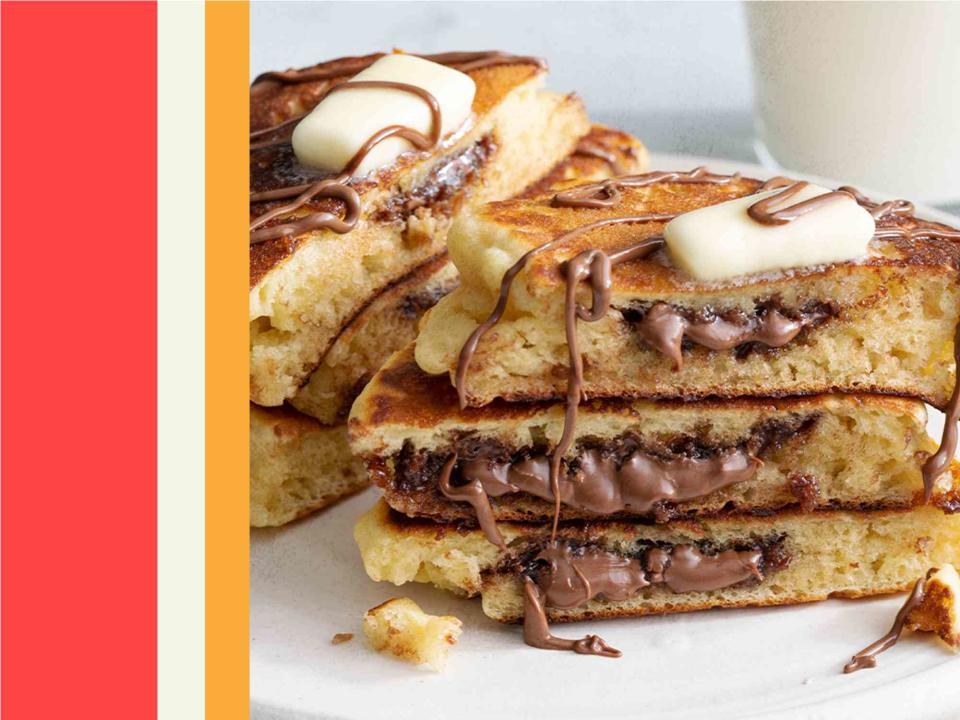Is Italian Nutella Really Better Than American Nutella?
The popular chocolate-hazelnut spread originated in Italy, true. But is the recipe different stateside?

Allrecipes
As you may have guessed by a peek through the pages of our magazine and a quick scroll through our recipe archives, we're big fans of all things spreadable. Soft cheeses, butter, icing, nut butter, hummus, tapenade, chutney, jam; you name it, we adore it—and likely have it stocked in our refrigerator or pantry as we speak.
While we're fond of that entire spread of spreads, one of our all-time favorite shelf-stable options is Nutella. We're not the only ones. The parent company, Ferrero Group, makes so much of the cocoa-nut combo that they purchase about 25 percent of the world's supply of hazelnuts, the grandson of Nutella founder/current executive chairman of Ferrero SpA, Giovanni Ferrero tells BBC News.
The chocolate-hazelnut spread has such a strong fan base that on May 31, 2017, the brand opened an entire restaurant dedicated to the beloved PB alternative: Nutella Café Chicago. Nutella even has its own day. Mark your calendars: World Nutella Day is February 5, the brand confirms.
As we revealed in our Nutella guide, the chocolate-hazelnut spread was previously called Giandujot and SuperCrema, and was first sold by the jar in Italy as "Nutella" in 1964. However, the creator, Pietro Ferrero had been whipping up a spread with cocoa and hazelnuts at home since 1925.
Today, Nutella is produced in 11 factories across the world, Ferrero adds in the BBC News interview. That means there is room for differences in formulation. So how does Italian Nutella stack up to American Nutella?
Italian Nutella vs. American Nutella
Most Nutella jars sold on U.S. shelves start in either Mexico or Canada. Whether it's produced there, in one of the two factories in Italy, or one of the other seven factories sprinkled around Europe and South America, the ingredient listed on the labels for Nutella remain essentially the same:
Sugar
Palm oil
Hazelnuts
Skim milk powder
Cocoa
Lecithin as emulsifier (soy)
Vanillin (an artificial flavor)
The only glaring differences lie with the suggested portion size—15 grams in Europe and 37 grams in the U.S.—and a couple distinct details listed on the European Nutella labels. European Nutella specifies percentages of each that 13 percent of the finished product is hazelnut, and 7.4 percent of the recipe is cocoa. No such proportions are offered for American Nutella—which is why many who have tried both verify that there are small but notable differences in color, flavor, and texture.
Compared to European Nutella, American Nutella is generally described as lighter in hue, more chocolate- and sugar-forward in flavor, and oilier and thinner in consistency than its Italian peer. Italian Nutella is often described as darker and richer in both taste and texture, and with stronger nutty flavor notes.
The Bottom Line
Nutella formulas made at all of the 11 factories around the world contain the same seven ingredients: sugar, oil, hazelnuts, milk, cocoa, lecithin, and vanillin. Although it's not definitively stated on the Nutella website or packaging, many taste-testers guess that Italian Nutella contains more hazelnuts (than the 50 nuts per jar boasted by American Nutella).
But the only way to know for sure is to taste for yourself. You can order European Nutella from places like Italy and the UK on Amazon; many who have done so fall on both sides of the debate. "So much better than the American. So worth every cent," one says, while another counters, "I could not tell the difference from the Nutella I buy in the store."
Or if you prefer, you can play around with our five-star Copycat Nutella Recipe to add a little more or a little less of any elements you desire—and to save loads of money on the store-bought version all the while.

